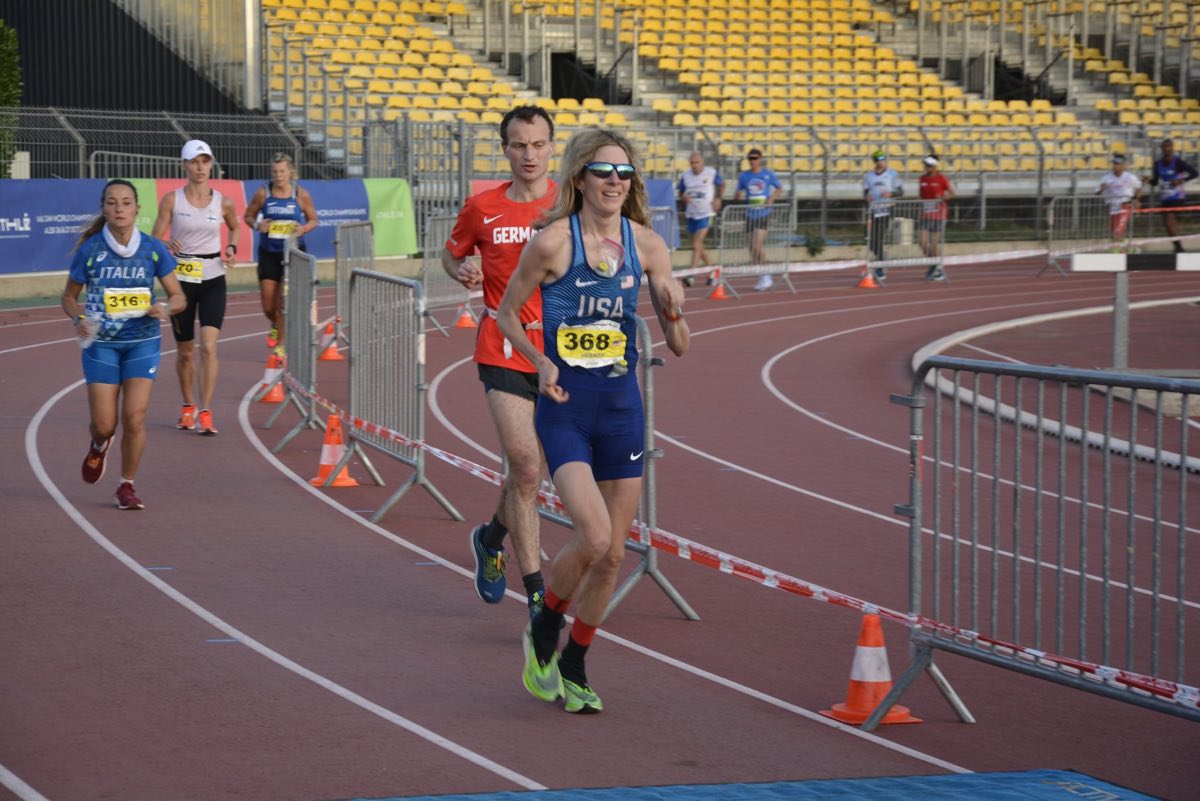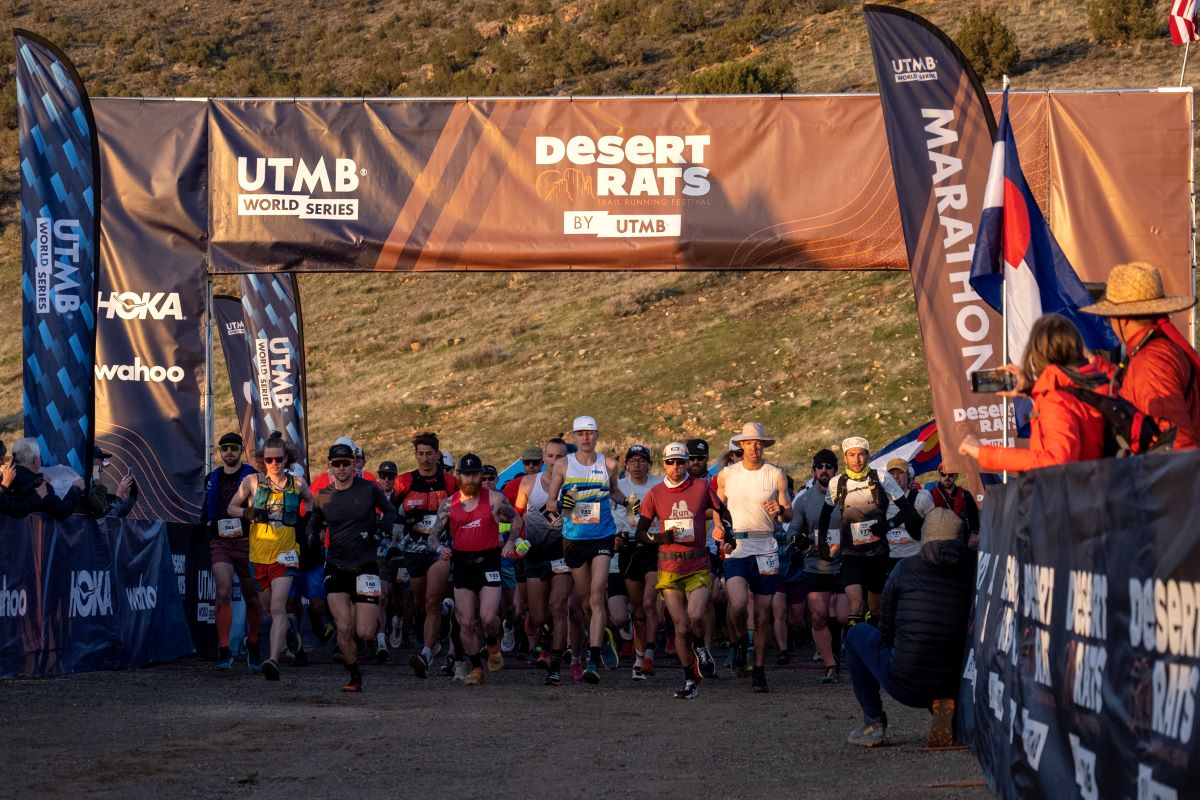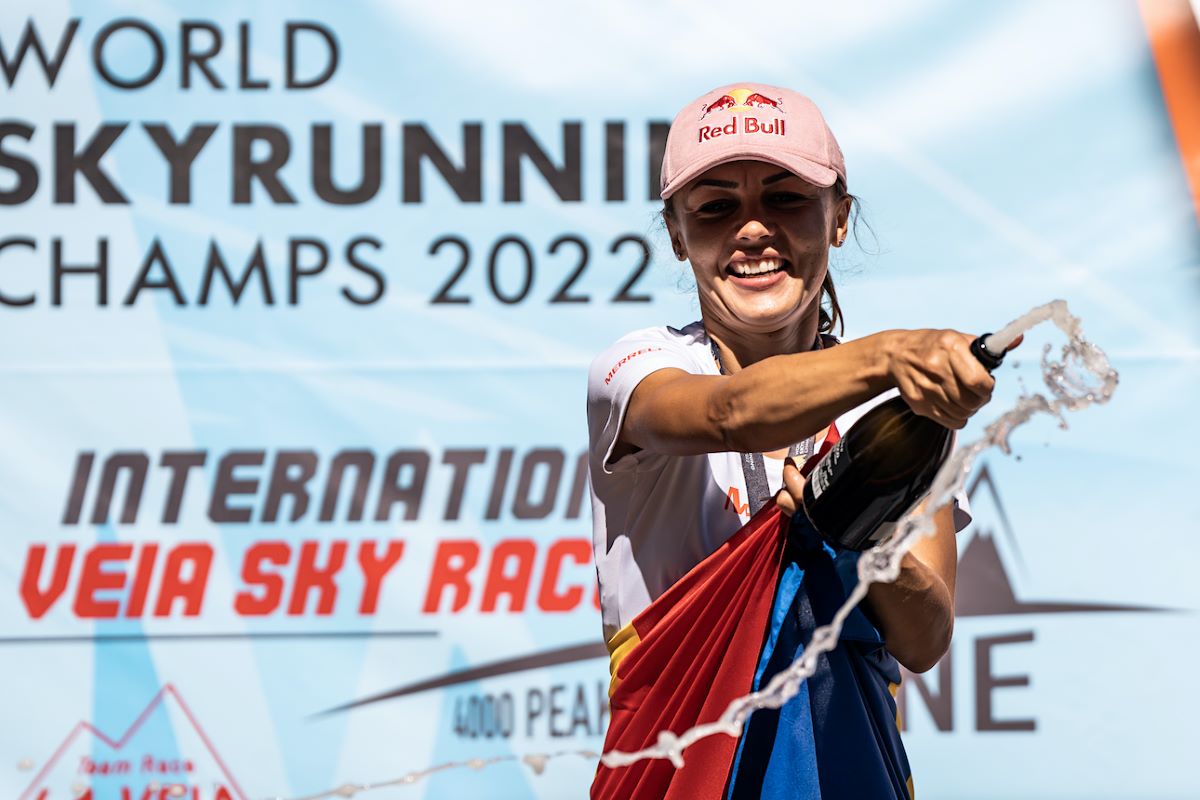Have you ever felt a preview for the competitive entrants in a trail race or ultramarathon overlooked top contenders?
Have you wondered why one athlete gets noticed by sponsors and another doesn’t?
Of course, there are multiple, nuanced answers to these questions. But one underlying challenge for both scenarios is that it’s notoriously difficult to rank and compare mountain runners, ultrarunners, and trail runners.
In this article, we’ll explain why that is. We’ll also break down how some of the existing ranking systems work, and we’ll discuss their relative strengths and weaknesses.
Why Is It Difficult to Rank and Compare Mountain Runners, Ultrarunners, and Trail Runners?
Until recently, the sports of mountain running, ultrarunning, and trail running did not have a unified sanctioning body or a single set of championships events that credibly determine the best runners at a given distance.
World Athletics now governs all these disciplines and is aligned with the International Association of Ultrarunners (IAU), the World Mountain Running Association (WRMA), and the International Trail Running Association (ITRA). Their long-term goal is to elevate the world championships events for all distances and disciplines in the sports of mountain running, ultrarunning, and trail running.
For example, the IAU 24-Hour World Championships are the established event for determining the world’s best 24-hour runners. But at other events, it can still be challenging to identify the best runners: are they winners of the World Mountain and Trail Running Championships, the Golden Trail World Series, a UTMB World Series race, or runners who set their own racing calendars to involve some or none of these races?

Camille Herron on her way to setting a world record at the 2019 IAU 24-Hour World Championships. Photo: U.S. National 24 Hour Running Team
For so many of the top trail runners and ultrarunners, their races are at least partially self-funded, so it makes sense to choose events — and destinations — that appeal to them personally. Sponsored runners’ race choices may be further influenced by their agreements and relationships with their sponsors: Are they encouraged to run particular races, or incentivized with appearance fees and performance bonuses?
Altogether, the current landscape makes it challenging to compare competitive runners to one another. There are multiple ranking systems in existence, and the races they incorporate into their rankings don’t always overlap. The four predominant ranking systems are currently (and in reverse alphabetical order): the World Mountain Running Association World Ranking, UTMB Index, UltraSignup ranking, and International Trail Running Association Performance Index.
We’ll spend the remainder of this article looking at each system in greater detail.
World Mountain Running Association World Ranking
In 2021, the WMRA, which governs mountain running, launched its own athlete ranking system, called the World Mountain Running Association World Ranking.
It awards points to athletes for participating in eligible mountain races, with top performers receiving more points. The WRMA classifies races into categories: A, B, C, D, and E. Races in the “A” category are WRMA World Championships events and award the most points.
The WMRA reports a current world ranking and the lifetime best ranking for each athlete. This means that an athlete who has retired from the sport or who is not currently performing at the same level they did previously — for any reason — still maintains a record of previous accomplishments.
For 2023, the WRMA has 104 races at which runners can win points. These include many well-known and well-respected events, such as Sierre-Zinal and the Broken Arrow Skyrace.
While the occasional 50-kilometer race appears in the race directory, mountain races are typically for distances up to the marathon. The WRMA World Ranking therefore offers a tool for recognizing and comparing top performers in a discipline — mountain running — that doesn’t always get the attention it’s due.
Its focus on sub-ultramarathon distances on mountainous terrain does, of course, mean it is limited in scope. These limitations are consistent with the mission and mandate of the WMRA, but it does mean the WMRA World Ranking alone will not resolve a friendly debate on your group run on whether Allie McLaughlin, who is second in the WMRA World Ranking at time of writing, is superior to 2022 UTMB champion Katie Schide.
UTMB Index
Prior to 2022, the Ultra-Trail World Tour might have been the lead series of trail ultramarathon races, and it included the races at the UTMB Mont-Blanc event. When UTMB announced a partnership with Ironman in May of 2021, it announced a new series of international races called the UTMB World Series, and the Ultra-Trail World Tour dissolved. The series format encourages runners to take part in more UTMB-affiliated races, particularly to gain entry into the UTMB Mont-Blanc races — UTMB, TDS, CCC, and OCC.
Around the same time, it created a ranking system called the UTMB Index. It follows the general model of the ITRA Performance Index, but only counts results in UTMB-affiliated races. As a representative of the UTMB Index explained to iRunFar, “The UTMB Index is the weighted average of a runner’s best UTMB Index scores in the [last] 36 months, up to the top five [results] are taken into account. The weighting means simply that the best score is given the highest importance, which progressively decreases for each subsequent result and that new results count more than older results. For each race a runner completes, a UTMB Index score is calculated using a statistical algorithm based on the runner’s finish time for that particular race course.”
To maintain their UTMB Index, runners need to have completed at least one UTMB World Series or UTMB Index race in the previous 24 months.
The UTMB Index affords certain benefits to runners, such as early/discounted registration for races in the UTMB World Series that do not use lotteries to select entrants. The UTMB website also indicates that some of its 100-kilometer and 100-mile races require all participants to have a valid UTMB Index, it says for safety reasons.

The start of 2023 Desert RATS by UTMB 50k, one of the events in the 2023 UTMB World Series. Photo: Donald Miralle for Desert RATS Trail Running Festival by UTMB
The UTMB Index is becoming the most impactful ranking system on this list for all participants in UTMB races, regardless of their place in the pack. The UTMB World Series aims to become the go-to series for competitive trail ultrarunners. It aspires to concentrate top athletes at the same starting lines, including the final, most competitive events of the season at UTMB Mont-Blanc. This strategy could make the sport more exciting and competitive.
Conversely, the UTMB Index is one component of the organization’s larger business strategy to dominate the trail-ultrarunning scene by using the prospect of participating in the prestigious UTMB Mont-Blanc to lure runners to specifically focus on UTMB races when planning their training and racing calendars.
Not everyone’s a winner in this new system, as existing races may lose registrants, and aspiring UTMB Mont-Blanc participants may find it challenging to travel to events that award the UTMB Running Stones necessary to enter the UTMB Mont-Blanc lottery. For an explanation of how the new entry system for UTMB Mont-Blanc works, you can read Zach Miller’s article on the topic.
Finally, as someone who missed out on two-plus seasons of racing due to pregnancy, recovery, and then a car crash, I can personally attest to how sometimes, despite our hard work and goals, 24 months can fly by without a race to show for it. The requirement to race in a given distance category every 24 months will leave some runners without a valid UTMB Index.
UltraSignup Ranking
UltraSignup is a race-registration website launched in 2009 by Mark Gilligan. It was sold to Atiba, a Tennessee-based investment firm, in 2021. UltraSignup finds your event-specific ranking by taking the fastest time in that event for that year, and dividing it by your time. If you finished behind the winner in your gender, your time will be shown as a percentage that is less than 100%. Your overall ranking is your average event ranking — you add all of your event rankings together and divide them by the number of UltraSignup scores you have.
There are numerous things UltraSignup does well. It allows anyone to search its race results, or the performances of race participants. It accepts race results even if a race did not hold registration through UltraSignup, meaning it has the potential to be a comprehensive source for race results. It hosts and accepts race results for a variety of distances and event formats. Runners retain their rankings even if they miss a season or two due to injury, pregnancy, or other circumstances.
This means, for example, that even though Timothy Olson does not currently have an UltraSignup result since 2019, the past winner of the Western States 100 still has his accomplishments on display and a high ranking.
UltraSignup also age grades its performance rankings, which acknowledges strong performances by masters and grandmasters runners. In contrast, other ranking tools may allow you to filter their overall rankings by age group, but do not attempt to compare or contextualize the impressiveness of, for example, Ildikó Wermescher’s fifth-place finish in the 2022 TDS at age 57.

Timothy Olson with with his baby son, Tristan, after winning the 2013 Western States 100. Photo: iRunFar/Meghan Hicks
Additionally, some other ranking systems award points based on a theoretical best performance, which means that a runner could win the same race two years in a row, but finish significantly slower one year due to weather conditions that impacted everyone’s results. While other ranking systems might consider that runner’s slower time as “less competitive,” UltraSignup rewards both results with a 100% ranking. That is, a win is a win.
One of the greatest limitations of UltraSignup is that it’s used predominantly by North American races. Runners living and racing on other continents are underrepresented in the race results, so the rankings are by no means global or all-encompassing.
UltraSignup’s ranking values all race wins equally, allowing it to avoid making subjective decisions on which races are the most competitive. This methodology is defensible and transparent. It does, however, mean that EmKay Sullivan’s 2022 win at the Way Too Cool 50k and my 2022 win of a local 50-kilometer race I did as a training run both resulted in 100% rankings on UltraSignup, even though Sullivan’s result is 1,000% more impressive. To be clear, though, the Oxbow 50k is an impressive event, even if my performance at it was nothing special.
International Trail Running Association Performance Index
ITRA was established in 2013 as a nonprofit association. The ITRA Performance Index is the most established global ranking system for trail runners.
The scale maxes out at 1,000 points, which is considered the theoretical best possible performance. At the time of writing, Kilian Jornet holds the highest men’s ITRA score, with a performance index of 950. Courtney Dauwalter has the highest performance index among women, with 843.

Kilian Jornet, 2022 UTMB champion. Jornet currently holds the highest men’s ITRA score in the world, at 950. Photo: iRunFar/Bryon Powell
A runner’s ITRA Performance Index is calculated using the weighted mean of their best race results, up to a maximum of five, from the previous 36 months. A runner with fewer than five results will still get a performance index. A runner with more than five results in the previous 36 months has an advantage, because their five best performances will be used to calculate their performance index. In 2019, ITRA introduced changes so that results for races within the last 12 months carry more weight than prior results, with the value of a result decreasing progressively after that.
If you were to have a high score on any of these ranking systems, the ITRA Performance Index would be one of the most beneficial. There are races that offer automatic and sometimes even free entry to elite runners based on their performance index — Pieniny Ultra-Trail, Ultra-Trail Harricana, and Ultra-Trail Hungary are three examples.
As you’d expect for an organization that has the phrase “trail running” in its name, the ITRA Performance Index focuses on assigning points values to trail events. This means that runners who excel at ultramarathons on the roads and track do not have their accomplishments reflected in the ITRA Performance Index. Marisa Lizak would be a case in point here — she currently has no ITRA Performance Index, but in 2022 she won the Desert Solstice Track Invitational 24 Hour and the Six Days in the Dome 24 Hour and placed second at the Spartathlon.
It’s significant that ITRA considers race results from the previous 36 months, because it affords runners some leeway to maintain a valid performance index even if they lose a season to injury. No system is perfect, and there are still runners who lose their ITRA Performance Index in that time period. Runners who participate in races whose results are not submitted to ITRA, or who spend an extended period of time away from racing due to pregnancies, injuries, or other life circumstances can see their ITRA Performance Index fall to zero.
Other Ranking Systems
Wait, there’s more!
The International Skyrunning Federation uses a ranking system to assign points to runners who finish skyrunning events on certified courses.
Until the close of 2022, the Canadian Association of Ultrarunners (ACU) National Rankings ranked its members based on their performances at ACU Listed Events in an annual series.
My local trails organization, the Manitoba Association of Trail Runners, creates an annual ranking of runners, too, though we value participation and volunteerism — a runner can rack up more points by attending many local races and volunteering for trail maintenance than they would for setting a course record at a single race.
These last two are local examples that illustrate just how many points systems are in existence to rank runners’ performances. It also highlights how they often weigh performances differently. Some systems factor in race competitiveness, others do not. Some systems focus on a particular series or brand of races, others do not.

Denisa Dragomir, the 2022 Skyrunning World Champion. The International Skyrunning Federation now has its own ranking system. Photo: International Skyrunning Federation/©iancorless.com
Do These Rankings Matter?
If you are an athlete looking to obtain or maintain a sponsorship deal, then being recognized for your top performances is always a good thing.
If you are a fan of competitive mountain running, ultrarunning, and trail running, then the ranking systems can offer the following benefits:
- Informing some pre-race coverage of top entrants,
- Allowing automatic and/or discounted entry for elite entrants at some events to encourage competitive fields,
- Allowing for some limited comparison of runners who may not engage in direct competition at the same events, and
- Serving as a qualifier that proves a person’s recent racing experience, which would be more flexible than needing to finish something from a discrete qualifier list — this is a rarely used tool, but could be a big benefit if used.
Ranking systems can also have some drawbacks:
- Raising questions about how best to weight race performances,
- Excluding certain results, disciplines, and/or runners, and
- Makes achieving an index in some of the systems an exclusionary process requiring money, free time, and a consistently able body to regularly travel and race.
I won’t comment on whether I think one ranking system is superior to another — you can do that in the comments section.
And I can’t say that any of these ranking systems affect me personally at present.
I am still mulling over these ranking systems’ pros and cons. For example, when it comes to promoting women’s participation in the sport, is it better to take the approach of the UltraSignup ranking, which gives a 100% score to any win regardless of gender? Or do the points-based rankings, inspired by the ITRA Performance Index, in which men and women are compared against the same theoretical best possible performance, with the result that the top women’s scores are lower than the top men’s scores, promote women’s participation more?
Sure, it’s useful as participants and fans of mountain running, ultrarunning, and trail running to understand how these ranking systems function. But, at the end of the day, the old cliché is true: each runner is their own toughest competition.
Call for Comments
- Do you have a favorite among the different ranking systems?
- What other pros and cons come to mind for these ranking systems?

